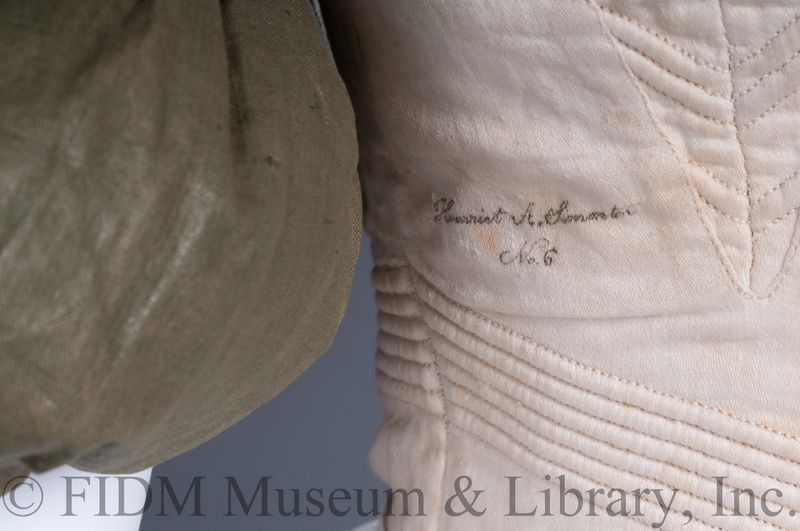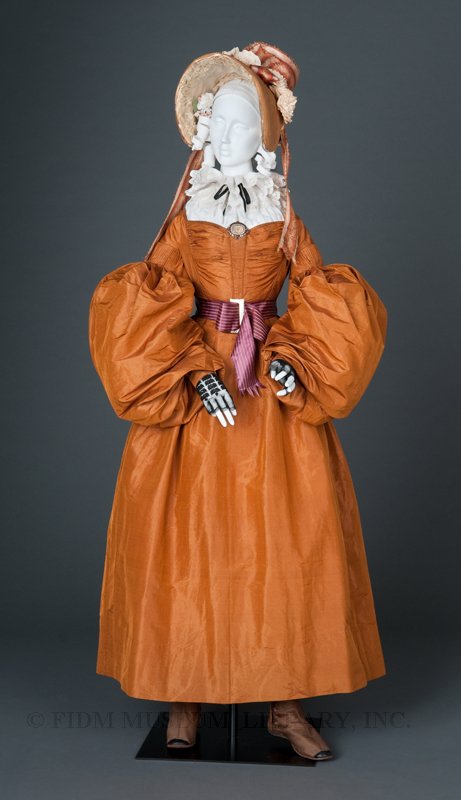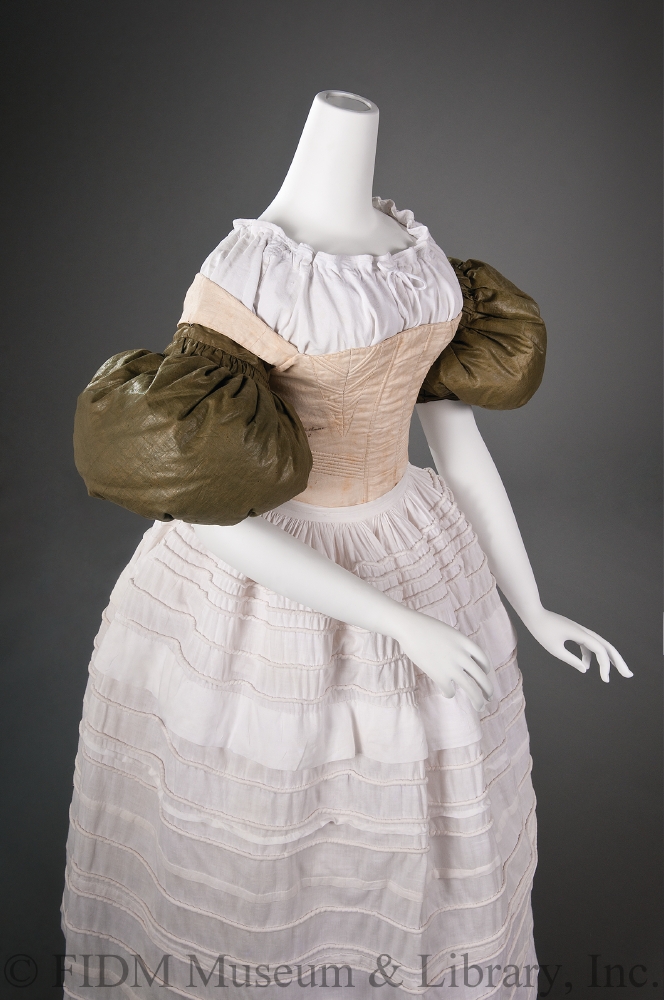Shaping the Romantic Era
Set between the glories of Napoleon Bonaparte's rule and Queen Victoria's namesake era was the age of Romanticism, a time of heightened emotional expression, intense nationalism, and widespread interest in the medieval period. Delicate bonnets and patterned waist ribbons with decorative buckles revealed one's knowledge of prevailing fads and enlivened an ensemble according to the wearer's mood or the formality of the occasion.
United States
Museum Purchase
1830s
2005.5.172AB, 2007.40.8, 2010.5.45, 2004.5.23
Fashionable dress of the 1820s and 30s relied upon body-shaping devices to achieve the desired silhouette. First, a woman donned a linen chemise, the undermost layer of dress, which protected the other garments from body oils and perspiration. Over this was laced her corset of soft, corded cotton, nipping in the waist and separating the elevated bosom by the insertion of a busk, a long strip of wood or bone at center front. In this example, the owner's name was inked on the side of the corset to distinguish it from others sent to the laundry.
 Detail of 2007.40.8, inscribed "Harriet A. Simmton No. 6"
Detail of 2007.40.8, inscribed "Harriet A. Simmton No. 6"
To keep the enormous sleeves of the dress from collapsing, large cotton pillows--called "plumpers"--filled with eiderdown attached at the upper arms. Corded petticoats were worn to support the full skirt. Like the corset cording, the insertion of cotton ropes into casings around the petticoat made the material firm, yet flexible. Only after these undergarments were secured was the outer gown slipped over a woman's head and settled onto this ideal foundation.

Europe
c. 1836-37
Museum Purchase
2009.5.66
The extreme breadth of the sleeves of this silk taffeta day dress represents the last vestige of the "imbecile" style. The shoulders have been banded down in tight pleats which, over the next few years, would elongate and push the fullness down the arms. The bodice is stiffened with a built-in, thick wooden busk at center front, anticipating the boning that defined the female torso for the rest of the century. The striking color--variously described as "amber," "apricot," and "citron" in fashion periodicals--was symbolically linked to the sunlit heavens.
